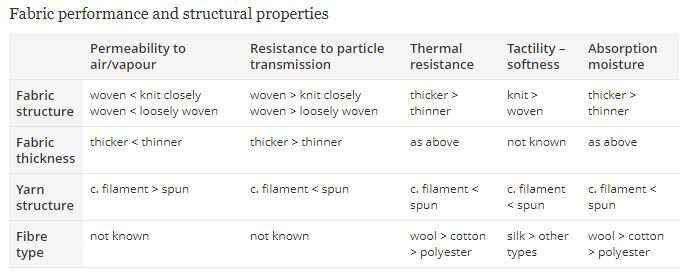Expert’s guidance on non-medical, reusable fabric masks

The University of Otago’s leading expert on fiber and textile sciences has produced guidance on factors to consider when choosing or creating a non-medical, reusable fabric mask.
Professor Raechel Laing, Clothing and Textile Sciences, says controlled investigations on the effectiveness of reusable cloth masks are rare, and many gaps in knowledge exist.
The use of masks and other forms of personal protective equipment in healthcare is widely understood, but since the outbreak of the COVID-19 pandemic, there has been debate about whether or not members of the general public need to wear a mask, and if so, under what conditions and of what type.
Professor Laing says reusable fabric masks vary, from the extent of coverage over the face, nose, chin; the security of positioning on the face; materials used (structural and performance properties, fiber content, finishes); number of layers and performance of the layered assembly; and sensitivity to repeated washing cycles.
Individual sensitivity to wearing a face covering for long periods of time vary too, with potential adverse effects such as poorer thermal balance, and skin irritation.
However, in New Zealand mask use is currently mandatory on domestic flights from Auckland, and will become mandatory for anyone traveling on public transport throughout the country from 11:59pm, 30 August, under new government rules for alert level 2.
The Ministry of Health suggests a few masks for each member of a household need to be available for use, and some form of face covering is better than nothing when in public.
Based on current knowledge and in guidelines from the World Health Organization, the following suggestions may assist decisions related to reusable cloth face masks.
Guidance on non-medical, reusable fabric masks
The purposes of a non-medical, reusable fabric mask are either for protection of healthy persons (i.e. to protect oneself when in contact with an infected individual or an individual whose health status is not known) or for source control (i.e. to prevent onward transmission from an infected person, when their health status is known).
Reusable fabric masks are typically made from several layers of material, and it is the combination of structural and performance properties of these materials which determines the overall performance and acceptability by end users.
Simplifying properties and assuming all other fabric parameters constant, effects on key performance attributes are summarized in the table below:

What is important to note from the table is that fabric structure has a major effect on performance (vapor resistance, resistance to particle transmission, thermal resistance, absorption of moisture), yet the focus is often on fiber type, undoubtedly reflecting the international marketing thrust of branded fibers and/or fiber-related organizations (e.g. Lycra, Tencel, International Wool Secretariat (IWS) Cotton Council International (CCI).
Internationally-agreed test methods (e.g. ISO, EN, ASTM) involve determination of the relevant property normally on a single fabric layer, however, re-usable fabric masks consist of layers, typically three layers. Therefore, tests of performance need to be undertaken on the layers, together, as in the assembly.
The principal material properties are filtration efficacy (resistance to particle transmission) and porosity (linked to ease of breathing), and a balance between these is needed. These two properties tend to be inversely related, with a material which is an efficient filter typically impairing ease of breathing.
Dimensional stability of the various layers with washing needs to be matched in order to avoid distortion and/or differential changes in porosity. Washing in hot water (~60°C) with soap or laundry detergent is required, and this needs to be considered in fabric/materials selection.
Use of elastic materials, those containing elastane filaments (e.g. Lycra) or very porous knit structures, is not advised because these stretch during use, increasing interstitial spaces and thus reducing filtration efficacy. A further reason is that many elastic materials are adversely affected by washing at the high temperature required for cleaning.
Three layers of fabric are typically required for this type of mask depending on both the fabric used, and whether or not the mask design provides for an insert filter.
- The inner layer is in contact with the wearer’s face—soft, absorbent (i.e. hydrophilic, closely woven structure from cotton/cotton blends; silk).
- The middle layer is either a filter (typically non-woven) in a pocket OR a non-woven structure (e.g. melt-blown, needle-punched, other form) for which varied fibers/filaments/films are possible.
- The outer layer is exposed to the environment and functions to limit external contamination/ penetration through that layer (hydrophobic—closely woven structure from polyester, polyamide/ blends, cotton).
- (Non-medical, re-usable cloth masks require labeling for fiber content, country of origin, and a care label. Implied fit for purpose requires appropriate evidence by the manufacturer.)
- While coating fabric for an outer layer or using a spray proof coated fabric enhances barrier/fluid resistance, this tends to block interstitial spaces in the fabric and thus reduce permeability to air/vapor (and adversely affects ease of breathing). Further, unfiltered air from the wearer may be released via the sides of the mask during exhalation. Coating is therefore not recommended.
Source: Read Full Article



